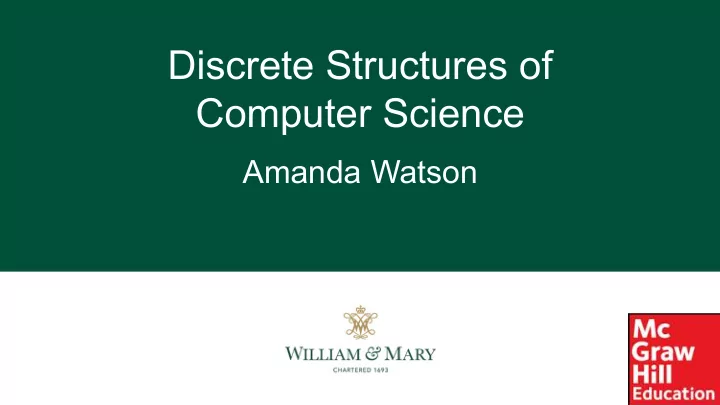

Discrete Structures of Computer Science Amanda Watson
What is Discrete Mathematics? • Discrete Mathematics: part of math devoted to the study of discrete (as opposed to continuous) objects. • Examples: integers, steps taken by a computer program, distinct paths to travel from point A to point B on a map along a road network, ways to pick a winning set of numbers in a lottery. 2
Discrete Math Problems • How many ways can a password be chosen following specific rules? • What is the probability of winning the lottery? • Is there a link between two computers in a network? • What is the shortest path between two cities using a transportation system? 3
Course Goals 1. Mathematical Reasoning: Ability to read, understand, and construct mathematical arguments and proofs. 2. Combinatorial Analysis: Techniques for counting objects of different kinds. 3. Discrete Structures: Abstract mathematical structures that represent objects and the relationships between them. Examples are sets, permutations, relations, graphs, trees, and finite state machines. 4
Course Goals 4. Algorithmic Thinking: An algorithm is a sequence of steps that can be followed to solve any instance of a particular problem. Algorithmic thinking involves specifying algorithms, analyzing the memory and time required by an execution of the algorithm, and verifying that the algorithm will produce the correct answer. 5
Course Goals 5. Applications and Modeling: It is important to appreciate and understand the wide range of applications of the topics its usefulness in various domains. Concepts from discrete mathematics have not only been used to address problems in computing, but have been applied to solve problems in many areas such as chemistry, biology, linguistics, geography, business, etc. 6
Homework 0 • Due in class Thursday, January 30th 7
Recommend
More recommend